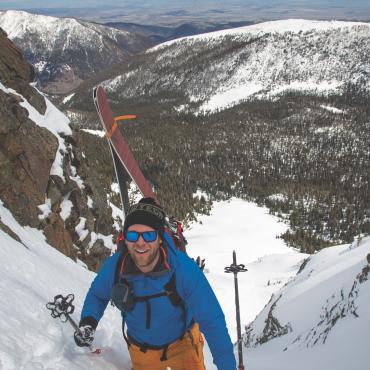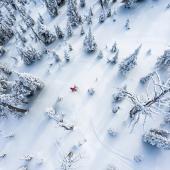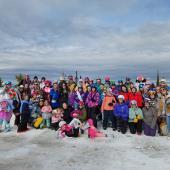Get Up to Get Down
Spring ski mountaineering.
Want to lay down some turns on a few local summits and couloirs this spring? Ski mountaineering is the name, and combining technical mountaineering with steep skiing is the game. But the stakes are often high in steep, exposed terrain and on firmer snow. Get the training, gear, experience, and beta to travel safely before heading out. Here’s a start.
Training
Guided ski-mountaineering camps and courses are a fun way to learn from the pros and ski some amazing terrain before heading out on your own. Multi-day, all-inclusive camps are available locally at Bell Lake Yurt (belllakeyurt.com), or in Cooke City at Zimmer Yurt (beartoothpowder.com). Or hire a guide for a day and go ski something outside your comfort zone.
Gear List
Essentials
-Helmet
-Crampons
-Ice axe
A helmet can protect against falling rock and ice (a common and serious spring hazard), crampons are necessary for climbing firm snow securely, and an ice axe is crucial for self-arrest in the event of a fall.
Other items
-Ropes
-Harnesses
-Anchor-building gear
Experience
Having the right tools (above) means nothing if you don’t know how to use them. Don’t just buy the gear and go for it—learning proper crampon and self-arrest techniques takes practice. Spend a day with a guide or mentor, and get comfortable with falling and arresting, crampon transitions, and various strategies for moving uphill (and down). If it’s steep and firm enough that you’re strapping crampons on, you also need to consider the skiing you plan to do. Is it too icy? Will it soften? Are you confident you can ski safely and in control? Getting up is only half the journey—you have to get down as well.
Beta
Ski mountaineering objectives abound in southwest Montana—here are a few to check out.
The Bridgers: The Great One, Arrowhead
The Spanish Peaks: Gallatin Peak, Fourth of July Couloir
Hyalite: Pinner Couloir, the Laser
The Beartooths: June Couloir, Waterfall Chute













